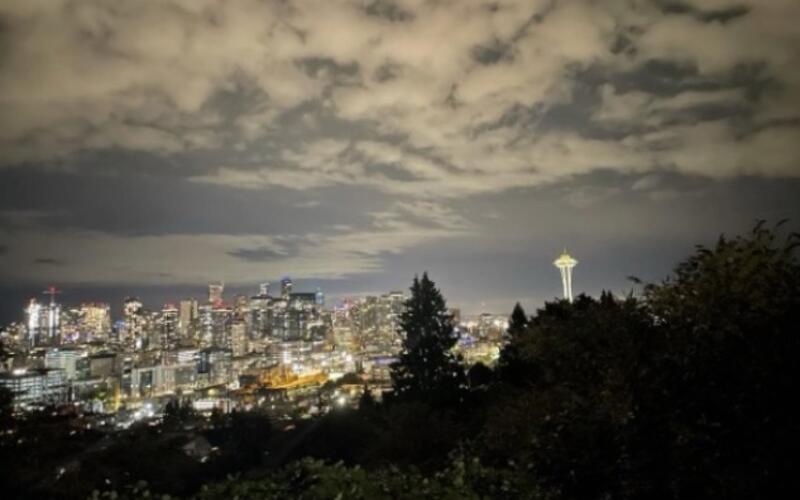Increasing Artificial Light Alters the Function of Earth’s Marine and Terrestrial Ecosystems

Increasing Artificial Light Alters the Function of Earth’s Marine and Terrestrial Ecosystems
Increasing sources of artificial light impact the movement and behavior of fish, amphibians, mammals, and birds, yielding novel ecological interactions. A topical review illustrates that as global populations grow, so will the intensity and frequency of light sources within urban and suburban environments. Without a rapid adoption of strategies to alleviate the proliferation of unnatural light, entire ecosystems may face menacing consequences.
The advent of artificial light at night forever changed how humans operated, ultimately driving industrialization and the ability to develop society under the night sky. According to some urban planners and light pollution researchers, five general types of artificial lighting exist: aesthetic, sky glow, façade, bridge, and road. Each of these lighting types offers humans the ability to navigate outdoor environments safely. For instance, urban planners and landowners commonly use aesthetic and façade lighting to showcase certain buildings such as museums, galleries, libraries, and public service centers. Artificial light installed along roads and bridges also crucially functions to maintain the safety of a developing society. But the reach of this light that preserves safety has a wide reach and impact. Large United States Northeastern cities like Philadelphia, New York, New Haven, and Boston emit some of North America’s most light pollution. Dense urban centers like Philadelphia, New York City, and Boston produce sky glows, or an amalgamation of artificial light that prophages far beyond cityscapes. These cities reside on or directly adjacent to bodies of marine water, like estuaries, marshes, and oceans. Prominent light pollution scholars Comino, Mayer, and Pinto et al. 2022 reiterate the challenge of surveying water-based organism impacts due to limited monitoring feasibility when compared to terrestrial spaces.
The intensity and frequency of each artificial light source we rely on to effectively navigate through cities uniquely impacts organisms and associated habitats. In Science, Jägerbrand and their colleagues recently reviewed major sources of anthropogenic light pollution and investigated how they influence different levels of biological organization. Ranging from primary producers like eelgrass meadows in the Long Island Sound to black bears in urban environments, the researchers emphasize how light pollution can re-organize, hinder, and in some cases, benefit ecosystems. For example, some light-adapted species like owls can more easily scan meadows, plains, and flatter rodent habitats, making is easier to harvest prey. The authors chiefly consider drivers in species-specific effects, but also scale to entire ecosystems. They assert that the drivers like sources and intensities of artificial light at night, vary in their severity and overall impact depending on the environment.
Since impacts of artificial light are specific to-the-species or environment this creates a complex challenge for ecosystem managers and urban planners. Managing ecosystems impacted by artificial light is a complex task because you cannot propose a single solution to mitigate the impacts. A universal light pollutant mitigation strategy (LPMS) would not operate well due to differences in impacts, municipal agreement, current light-based frameworks, and limited enforcement mechanisms. Additionally, limited state and federal funding is available to implement light mitigation strategies, so it is difficult to mobilize local governments and private property owners to adopt light-adaptative recommendations. That said, Connecticut’s General Assembly recently adopted a law that set a robust precedent for integrating light adaptative strategies in governance and planning for suburban-dominated states. The law requires all state-owned structures to turn off all nonessential lights after 11:00 pm which increases the resilience of urban and suburban species as they trek across the built environment.
Such laws are important because as sources of artificial light expand and intensify, they threaten the health of nocturnal-driven food webs. Artificial light can create timing discrepancies in food systems. Ecological food web discrepancies transpire when a predator plans to forage for food and fails to seek their prey item because of artificial drivers. When light pollution disrupts the prey’s sleep schedule, they will move through their typical habitat at different times and spaces. For example, species like owls and bats depart from their sleeping habitats to forage for prey items like ground-dwelling mammals. Under light pollution scenarios, these patterns can change radically or be rendered entirely absent. So, though there are few studies that explore how predator-prey relationships interact with ALAN, it is not hard to imagine potential ramifications.
One effective strategy to reduce light pollution is systematically introducing dark sky hours in urban contexts. Some Intermountain Western states like Southern Utah and Wyoming, contain the largest segments of dark skies without light pollutants. Dark skies and flourishing nocturnal food webs create high ecosystem intactness, an indicator of overall ecosystem health and functioning. Allowing naturally dark ecosystems to remain untouched by light pollutants marks the most important course of action. Second to the most optimal course of action and more feasible, urban, and suburban planners can use adaptive lighting strategies. For instance, using downward-facing road and bridge lighting or introducing a shield, repositions the direction and intensity of light into the focal area, changes which can reduce the intensity of light pollution. Since directing light into the focal area does not compromise human safety, there are few drawbacks to integrating such strategies. These changes only add value to the nearby wildlife who rely on dark skies to cross into habitats for a night’s rest or fly through the airway in search of new territory.
Therefore, adopting strategies that protect darker and less anthropogenically modified environments is a critical task for wildlife and humans. Unlit and undeveloped environments are rare, making them historical legacies in the 21st century lightscape. Preserving these legacies allow ecologists and urban planners to understand the most effective restoration methods because they can attempt to reconstruct darker conditions. Functionally rich and thriving species interactions exist within naturally dark ecosystems, so society should strive to retain the as many of these environments as possible.
